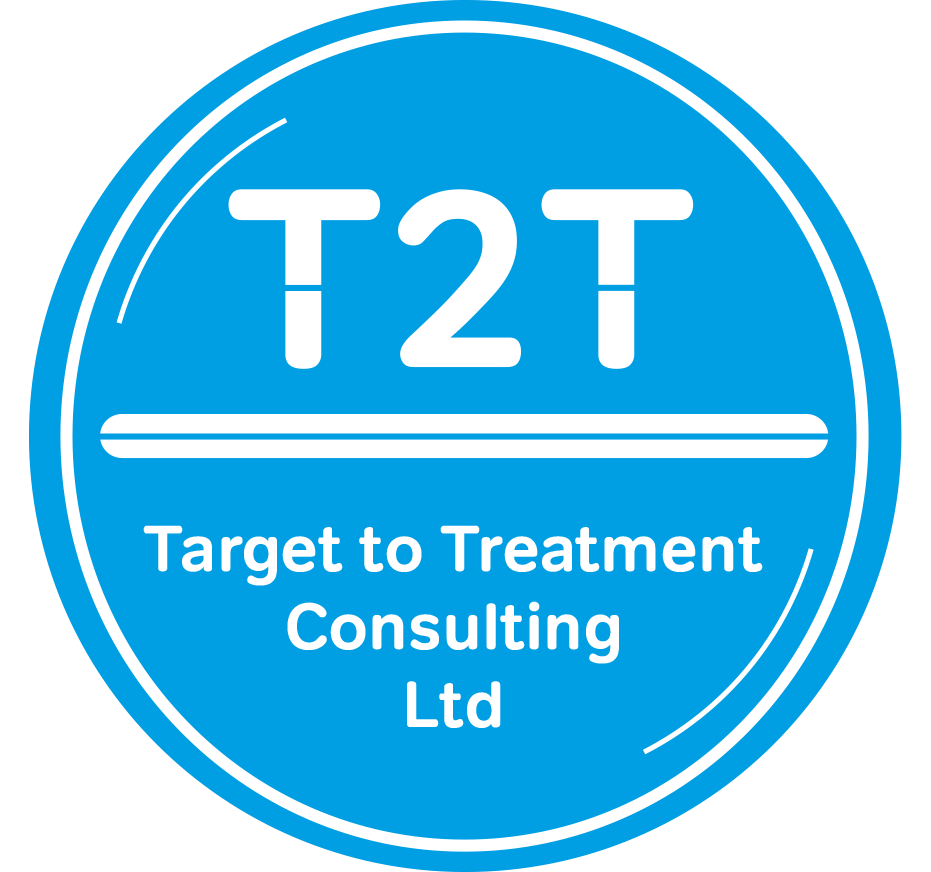Working with Target to Treatment (TTT) Consulting Ltd
Target to Treatment works across the discovery and development pipeline to support your goals. Our work is bespoke as no two projects are the same and we are guided by the science. We can work on one-off projects or provide ongoing support to your project team. We welcome new challenges and utilise our professional capabilities to provide new solutions.
Contact us to discuss how we can help you achieve your goals.
Our Services
Our services with respect to the drug discovery and development pipeline are illustrated in the interactive diagram below. We have general experience in all of the processes mentioned and particular expertise in those areas underlined. Hover over or click Tap the underlined text for more information. Selected services are explained in detail further down this page. We also work with several associated companies that significantly expand our capabilities.
Our Capabilities
Our Partners
Target to Treatment is proud to be part of a wider 'ecosystem' of companies with complementary capabilities. With our pooled expertise we can support your more complex projects and deliver outcomes flexibly and effectively. Click/tap on their logos below to find out more from their own websites.
Services in Detail
Biomarkers
A biomarker is "a defined characteristic that can be measured as an indicator of normal biological processes, pathogenic processes or responses to an exposure or intervention, including therapeutic interventions" - FDA-NIH BEST Resource Definition
Biomarkers may be classified as follows:
- Diagnosis: Several diseases may present similarly but have different underlying mechanisms. If a biomarker can differentiate these groups this allows better selection of patients for trials.
- Target engagement: Understanding whether the drug has engaged sufficiently with the target allows better determination of whether sufficient dosing is being achieved.
- Patient stratification: Identifying patient subgroups more likely to respond to an intervention with a biomarker could allow better selection of patients for clinical trials.
- Disease progression monitoring: A biomarker that changes with the disease condition may show whether an intervention is working before the change in disease state can be observed or measured.
- Safety: Safety is incredibly important in clinical trials and predicting or detecting adverse events in patients based on a biomarker will improve safety and conduct of a clinical trial.
What is the problem? There are many types of biomarker used during clinical development but it is not straightforward to understand where they are most useful, where they have been validated (clinically or pre-clinically) and how established they are.
How can we help? Target to Treatment provides briefings on the use of biomarkers in existing clinical trials and the research literature supporting their inclusion. We can help you understand whether biomarkers are yet established in your therapy area and how useful they could be to your drug development.
Competitor Research
Competitor Research: Understanding which competitor assets in development are likely to provide significant competition to your medicine will inform your own path of development and interactions with investors.
How we can help: We can provide a comprehensive analysis of competitor assets with respect to their mechanism of action, their modality and route of administration. Timelines and probability of success can also be included.
Does Estimation
What is dose estimation? The dose is the single most important feature of your new medicine. Cumulative data over time is used to calculate the dose with increasing precision. The translational studies are used to define the MABEL dose and the therapeutic dose. Toxicology studies define the maximum dose and exposure for first time in human trials.
How does Target to Treatment help? We can help you understand the necessary preclinical work to find a therapeutic window and with clinical trial design.
Endpoints
What are endpoints? Endpoints are 'anything' that you can measure during a clinical trial. Endpoints can relate to pharmacology, target engagement, pharmacodynamics, pharmacokinetics, clinical parameters, patient reported outcomes, imaging and safety amongst others.
What needs to be considered? Which endpoints to measure? Which of these is the primary endpoint? Incorporate in-study adaptation, robust decision-making as well as PK/PD modelling to maximise probablity of success.
Indication prioritisation
What is indication prioritisation? Indication prioritisation is the process of selecting the most appropriate patient population to demonstrate target engagement, pharmacokinetics, pharmacodynamics, changes in relevant mechanistic biomarkers and ultimately efficacy.
Why does it matter? Before investing significant resources in pre-clinical and clinical research it is important to consider which indication(s) to pursue in pre-clinical and ultimately clinical development. The choice of indication(s) affects the developmental path of the asset, the likelihood of disease modification, the chance of market approval and the market size available for your asset.
What can we do? We have bespoke tools to facilitate the objective selection and filtering of potential indications. We add scientific expertise and industry experience to provide a more nuanced prioritisation.



